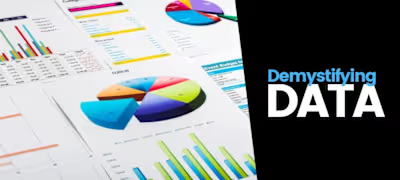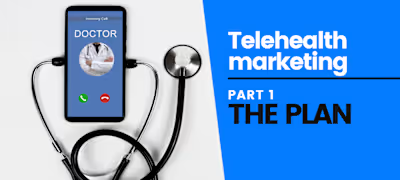Top 4 Sales Enablement Strategies for a Post-Pandemic World

The verdict is in.
Sales enablement, long considered an invaluable tool for most companies, has recently emerged as an outright necessity for any business hoping to make it through the pandemic. With 87% of companies indicating plans to retain and/or expand their sales enablement activities over the next year, it’s clear sales enablement is something businesses can’t afford to be without, particularly as we move into the post-COVID era.
But though the benefits of post-pandemic sales enablement are currently being felt across the entire market landscape, it’s possible some organizations still haven’t made the most out of their sales enablement plans.
This makes a lot of sense.
In the scramble to maintain workflows and sustain revenue, many companies may have overlooked some of the key advantages sales enablement has to offer. They might have neglected a deep sales enablement dive in favor of treading water, simply to stay afloat. Or they may have allowed sales enablement efforts to atrophy while they focused on other tasks.
All of this is understandable, but it can also spell trouble. If too many sales enablement resources are left untapped, companies who employ its solutions may be in danger of missing several golden opportunities to innovate and optimize revenue.
We’re here to provide you with some suggestions for reclaiming and re-empowering your sales enablement efforts. The following are four insider tips for maximizing your sales enablement plan and reaping as much benefit as you can from your sales enablement processes as you adapt to our new business normal.
#1: Regroup and recalibrate as needed
The onslaught of COVID-19 forced many sales teams into patchwork, ad hoc practices, cobbled together to help companies live to fight another day.
And while survival has become a global watchword (for our businesses as well as ourselves), the time has come to take a break, take a breath, and reassess.
As obvious as it sounds, it’s essential to conduct a full inventory of your sales enablement processes before taking any further steps. Consult with sellers, marketers, and even C-suite stakeholders to gain insight into which sales enablement practices have been working well and which should be kicked to the curb in 2021. Look for gaps in workflows, content, and communication. Are your pitches getting little to no traction? Consider revising your scripts and templates to adopt a more personal, empathetic tone (more on this later). Are your sellers having difficulty getting buyers to cross the finish line from evaluation to close? Try remapping your buyer’s journey, paying close attention to how interests and engagement patterns might have changed over the last ten months.
Zooming out in this way will actually help you zoom in and restructure your sales enablement systems so you can optimize operations down the line.
#2: Go as digital as possible
As Graham Hawkins of SalesTribe reports, many tech sales giants like Microsoft, IBM, and Oracle have, in recent years, rerouted resources toward virtual selling practices.
This move proved exceptionally prescient in the wake of the pandemic.
In fact, Forbes.com indicates that 2020’s most successful sales enablement practitioners were those who digitized everything, from run-of-the-mill practices like email outreach to internal processes like training, sales funnel mapping, and interdepartmental alignment.
So, if you haven’t brought your sales enablement systems firmly into the digital age and transferred all your interactions––both behind the scenes and in the field––online, now is most definitely the time. A recent report on the state of sales enablement notes that virtual enablement can actually promote scalability and flexibility among sales teams and prime companies for ongoing success… both now and in the future, post-pandemic age.
The same study found that sales enablement leaders who implement a virtual sales enablement platform can likely expect win rates of up to seven percentage points higher than their analogue competitors. Such a platform should offer a range of services: from content streamlining to interactive sales guidance tools, engagement tracking, AI-powered content surfacing, remote onboarding, and more. Once established, a virtual sales enablement solution can help provide easier access to your newly socially-distanced audience (most of which now operates entirely online) and facilitate better communications among your revenue-facing teams.
#3: Pioneer alignment efforts across the board
Revitalizing your sales enablement processes and bringing them online are both excellent first steps, but these efforts only make sense if they’re carefully aligned with broader business objectives. Indeed, Yarun Nahar, head of enablement and learning solutions at Facebook, suggests enablement practices that are untethered to a larger company strategy can run the risk of throwing departments into chaos. “If you can’t map exactly what you’re doing in terms of enablement directly back to a strategic initiative for the company, you’re more likely getting into the tactical catch-all space,” Nahar warns.
Try and combat this catch-as-catch-can feeling by committing to an ongoing collaboration with all internal teams. As a sales professional, you already know that alignment with marketing is critical to streamlining operations and coordinating product messaging for maximum impact. But consider this: A victory for revenue teams that doesn’t live up to wide-ranging goals for company improvement? That only counts as half a victory at best. An increased close rate, for example, might seem like a win at first. But if your new sales are limited to a niche demographic, they may actually be holding your company back instead of helping it grow.
Be sure to focus a good portion of your energies on learning how enablement techniques can help support overall plans for continued success. This might mean stepping up communications with marketing (providing feedback on content effectiveness, reviewing engagement trends, etc.), but it might also mean checking in with HR to see how your sales enablement training programs can help reduce seller turnover––or even comparing notes with your colleagues in development regarding newer, more COVID-centric buyer pain points.
If all this seems a little overwhelming, remember: The important thing is to make certain your sales team doesn’t exist in isolation. Extend a helping hand wherever possible and remain receptive to shifts in company culture, especially as you and your coworkers continue to navigate this ongoing crisis.
#4: Rewrite, revise, and personalize
With the bulk of sales interactions and sales content now occupying a virtual space, a poorly timed email or an impersonal, tone-deaf pitch can easily backfire and kill a sale. The simplest way to avoid such missteps? Make personalization a priority.
Be warned, however: This is much easier said than done. Strategies for personalization can be as varied as the consumers they hope to target.
You’ve no doubt heard the word “empathy” used quite a bit in the past year––and with good reason. Taking time to review and revise your content so it conveys a more helpful and informative tone (as well as a sympathetic ear) is a wise choice in the era of COVID.
But being personable isn’t always the same as personalizing your content.
Take individualized selling even further by turning to your engagement analytics for guidance. Once you have a quantifiable sense of who’s opening your emails, downloading your pitch videos, or reading your case studies, you’ll then be able to segment your audience and refine your content as needed, giving you a better chance of meeting your mark. It will also provide a clearer picture of where and how your buyers spend their time (e.g., on social media, scrolling through their inboxes, or meeting on video platforms), allowing you to make more informed decisions about which channels will be most impactful for future engagement.
As you work toward maximizing your sales enablement efforts in the new year, keep in mind sales enablement is only as effective as the work you put into it. Don’t be afraid to ask for more or to push beyond the boundaries of what’s been done already. After you’ve completed your sales enablement assessment, transferred all sales enablement functions online, taken steps to align sales enablement with company objectives, and optimized all relevant content (as well as methods for delivery), keep pushing. If you find a loose end in your closed-loop strategy, deploy your sales enablement metrics to help tie it up.
Whatever the challenge, sales enablement should rise to the occasion. If not, refer back to #1 on our list, identify what’s missing, and fine-tune your way to a better, more comprehensive plan. You’ve been revamping and rebuilding your systems since the pandemic began, after all. Just make sure to include sales enablement in the mix as you go forward.
There’s A lot That will Inspire New Trends in B2B Sales and Marketing, Catch more from the Experts:
Liked This Article? Explore More Here:
Like this project
Posted Apr 17, 2024
Sales enablement , long considered an invaluable tool for most companies, has recently emerged as an outright necessity for any business
Likes
0
Views
8





